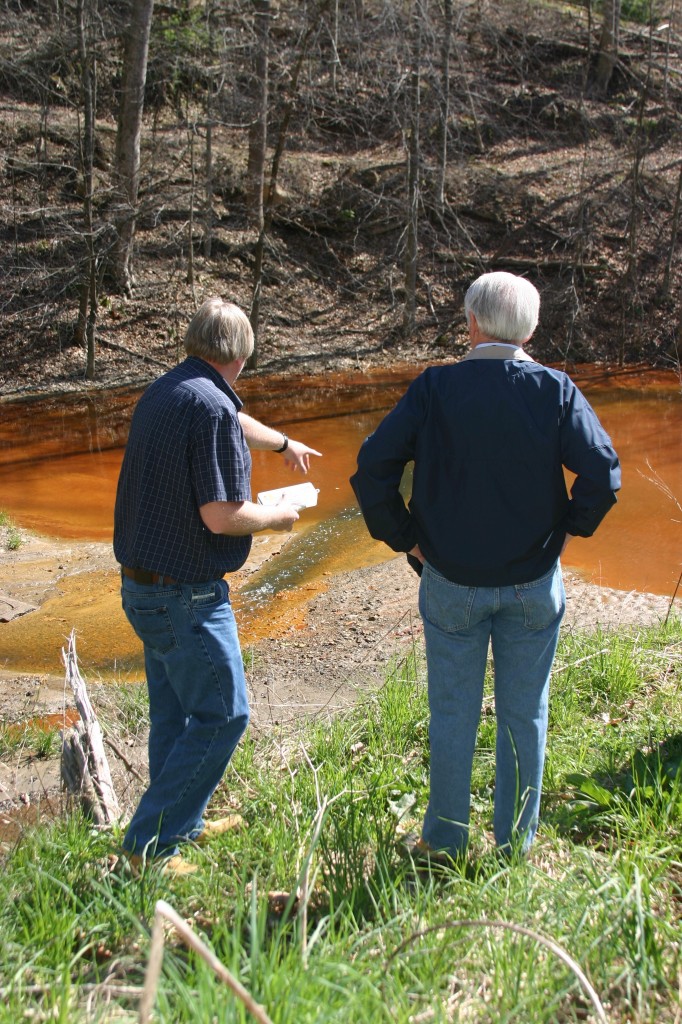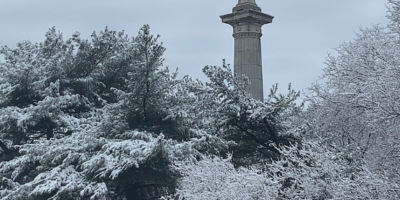From the November 1, 2011, performance of Rat Shed Radio, held at Homegrown Press. Other Rat Shed Radio paddles can be found here: Fayette floaters and fair Jessamine.
From its headwaters in the mountainous southeastern part of the state, the Kentucky River flows northwest toward its confluence with the Ohio. The river diverts from this northwesterly course but once, when it hits the high grounds of the Lexington peneplain and is forced to cut a southwest route around the area now known as Lexington. The crescent-shaped region carved by this riverine diversion, the fabled canelands, has long been a hub of all forms of life.
This section of Rat Shed pairs some history on the Fayette crescent with songs by Wes Houp, Chris Sullivan and Warren Byrom.
Introductions
Wherein NoC editor Danny Mayer stammers meekly for a couple minutes. The night’s musicians are introduced. Take a drink for every “uh” you register.
Henderson’s Folly
Kentucky’s European roots in the area, from blessed Dan’l Boone on down, are steeped in corporate interests and land speculation. Here’s a version from the eminent Filson Club member George Washington Ranck on the 1775 Watauga Treaty, which set the terms on the purchase of all state land south of the Kentucky River from the Cherokee Indians. Wes wrote the accompanying song, “Henderson’s Folly,” after a particularly intense two-nighter from West Irvine to Doylesville. It’s one of those ‘old weird America’ songs that Gillian Welch and Dave Rawlings do so well.
The great divider
Surveyors love rivers because they make easy dividing lines. The Kentucky River is no different. Its waters provided the boundary line separating the area’s original three counties: Fayette, Jefferson and Lincoln Counties.
Chris Sullivan provides musical accompaniment with “Haul Away, Joe,” a traditional sea shanty sung by working sailors as they crossed the world’s oceans and seas. According to Chris, the lyrics changed according to the whims of the seamen singing them–a tradition continued in this version.
The fabled canelands
The reading comes from an article on the great impact Kentucky River ferry crossings played in the state’s development. Not only were they pathways for trade, but so too did ferry crossings operate as social and political gathering places for the young Commonwealth. Nowhere was this activity greater than in the area surrounding Lexington–from Boonesborough on the east to Todd’s Ferry nearby present-day Brooklyn Bridge on the city’s southwest. The article was written in response to a 2011 budget proposal floated by Mayor Jim Gray to cut funding for the operation of Valley View Ferry, the only ferry still in operation on the Kentucky River. Valley View’s funding was restored, though we’re sure it had more to do with the on-again, off-again progressives at ProgressLex, wealthier folk who (unlike this paper) have the ear of the mayor, several council representatives, and much of the city’s media.
Warren Byrom accompanies this selection with a stripped-down version of his song “The fabled canelands,” from the album of the same name. At the time of European contact in the second half of the eighteenth century, cane covered much of the bluegrass region, particularly in the area’s river and creek bottoms. Now mostly eradicted by European development, you can still find patches of dense cane patches here and there along the Kentucky. In addition to providing the title for this section of Rat Shed Radio, Warren’s song always seems to capture my feelings of wonder and disappointment with this bluegrass place that is now my home.
Downriver blues
“Distance negates responsibility.”
Guy Davenport, quoted in “Moving Mountains,” by Erik Reese.

Rick Handshoe points out tainted water to Kentucky Governor Steve Beshear. Photo courtesy Kentuckians for the Commonwealth.
The Kentucky River headwaters in the mountains of Eastern Kentucky, a region that has been under assault by out-of-state coal corporations for nearly a century. Most recently, this assault has come in the form of mountaintop removal (MTR), a process of coal extraction that requires coal operators to blast away mountaintops to get at the coal seams located within them. This process has had disastrous economic (MTR is mostly automated and therefore a job killer), social (MTR has destroyed and endangered homes, holler communities and schools), and environmental effects.
While citizens in the bluegrass, located merely 75 Kentucky River miles down-current, may attempt to ignore the economic and social costs of MTR, we cannot escape its environmental effects. The same chemicals, heavy metals like selenium, that leach out of mine sites and into the water in Harlan County, hit dry runs and creeks, and eventually end up flowing through the Bluegrass region via the Kentucky River.
And what is this water like? In Eastern Kentucky, increased water toxicity has contributed to spikes in birth defects. Babies born of mothers living near MTR sites have higher rates of respiratory, nervous system, musculoskeletal, gastrointestinal, and urogenital problems. Here in Lexington, the same water–bolstered by thousands of leaky current and former mine sites that litter our watershed–collects and gets slurped up at the city’s water in-take station nearby Valley View. Like in Harlan, from the station the water is “cleaned up” and then sent into the homes of mothers, current and future, and their babies (current and future) to consume by drinking, bathing, washing and watering.
This piece concerns a closed mine site passed by some River Rats on a summer trip through pools 10 and 9. The SECO sight in question is located at Cubbard Rock on the Kentucky River some miles upstream from the mouth of the Red River. The accompanying song by Wes gets into the familial social and economic choices forced upon mine workers toiling for corrupt and careless coal corporations. The Upper Big Branch Mine, referenced in the song, was a Massey-owned operation located in West Virginia. On April 5, 2005, an explosion deep underground in Upper Big Branch killed 29 of the 31 miners who were left trapped in the mine shaft. An independent and state-funded study later found both Massey and the Mine Safety and Health Administration directly responsible for the blast. The photo to the right is the one referenced in Northrupp’s letter to Gortimer.





Leave a Reply